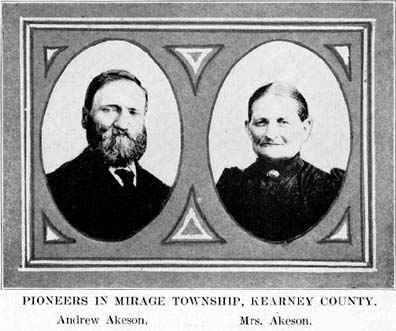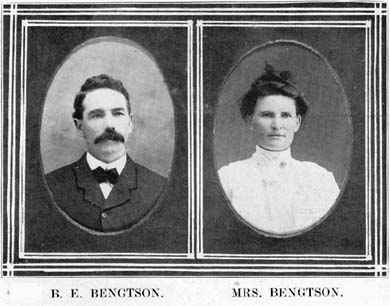
NEGenWeb Project
Resource Center
Church

HEN the Rev. C. H. Södergren came to Fridhem he established himself with his family in a sodhouse west of the church, this being centrally located between his two charges.
The number of communicants at this time was 6 and the whole membership 140. Considering the adversities that the congregation had had to meet during its early existence, this was a very good nucleus around which to gather a congregation. Furthermore, this remnant was tried and true and contained many willing workers.
Södergren was the very personification of kindness. Having known suffering and privation himself, he could sympathize with the poor people who were struggling against an uncertain fate. Although he had promised only two services a month to the Fridhem people, he did not stop at this. He visited them in their homes and advised and comforted them. As a proof that he had faith in the country and trust in Providence, it can be mentioned that he bought the quarter section of land located south of and across the road from the church. Here he built a good frame house and made it his home as long as he had charge of the congregation. Södergren's salary in Fridhem the first year was $250, and although there was nothing said about it in the call, the people also helped him farm his land. In his missionary work he had a very sensitive condition to contend with. He served two congregations, located side by side, and when a family decided to join the church he possibly advised them to join that congregation which was not their choice. This he was compelled to do where they lived in the territory of the church he advised them to join. He was conscientious, but not arbitrary, and desisted when he saw that his advice aroused animosity towards the cause of the Lord. The new members were welcome into either Fridhem or Bethel, and he had done his duty.
|
110 |
THE FRIDHEM CHURCH |
That he did not work for his own aggrandizement was shown when the B. & M. R. R. Company, which had built through the territory, wished to place a station on his land. This would have started a town and both the church and Södergren's home soon would have been within the bounds of the new village. But Rev. Södergren refused, saying, "We do not want the church in town. It is better to have it out in the

quiet of the country.'' His parishioners generally shared this view with him, and the station was located two miles farther west.During the first year Södergren served the congregation he baptized seven children and there was a small increase in membership. Ten persons were admitted into the church, four on letters and six on confession.
The young people were Södergren's special care, and he served as chairman of a literary society that was organized by the youth of the congregation and which held its meetings in the old sod church. Here his gentle ways exerted an influence greater than a more arbitrary authority could have done. He planted the good seeds in the minds of the young people, which later quickened, grew and bore fruit, beautiful
|
JUBILEE ALBUM |
111 |
and manifold. In the young people's literary society of Södergren's time, debating seems to have had a more prominent part than it has had at a later day. The subjects chosen for debate were often deep and difficult and were probably more fit for an academy of learning than a country young people's society.At first the church had no organ, and some one who could sing would

take the lead in singing, the congregation joining in. The lead was usually taken by Mrs. Otto Gustafson, who had a fine voice and was acquainted with the old Swedish hymns and church melodies.But the congregation longed for instrumental music. They wished for an organ in the church. A bazar, or social, was held in the sod church for the purpose of raising the money for an organ. The bazar was a success and the church soon had an organ. Some one was needed to play it. Mrs. John Bloom, who was the organist at Bethel, promised to play the organ and consequently she was the first organist.
The communicant fees as first were $2 for a man and $1 for a woman. This was raised in Södergren's time to $6 for a man and $4 for a woman and amended in 1888, so that confirmands should pay but half as much until they had attained the age of eighteen years. Payments of communicant fees were made due April 1st and October 1st of each year,
 |
 |
 |
 |
|
© 2002 for the NEGenWeb Project by Pam Rietsch, Ted & Carole Miller. |
|||